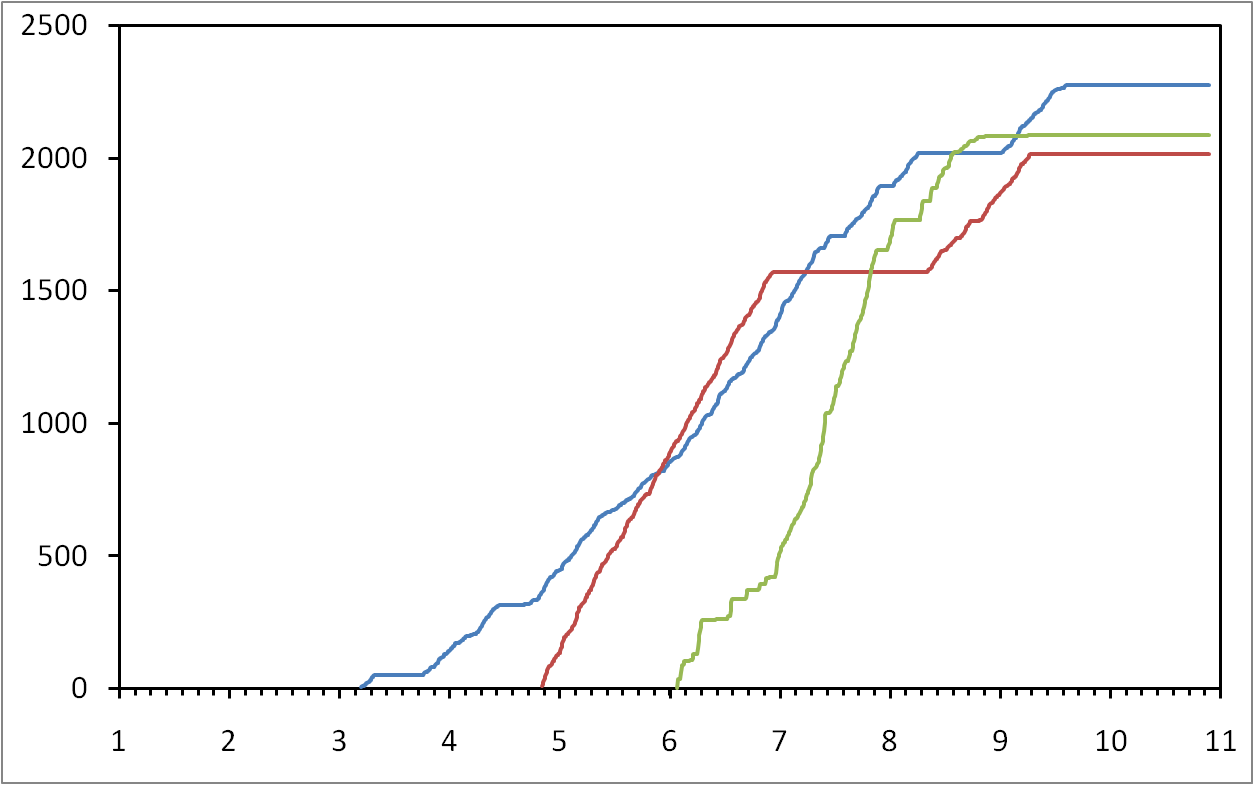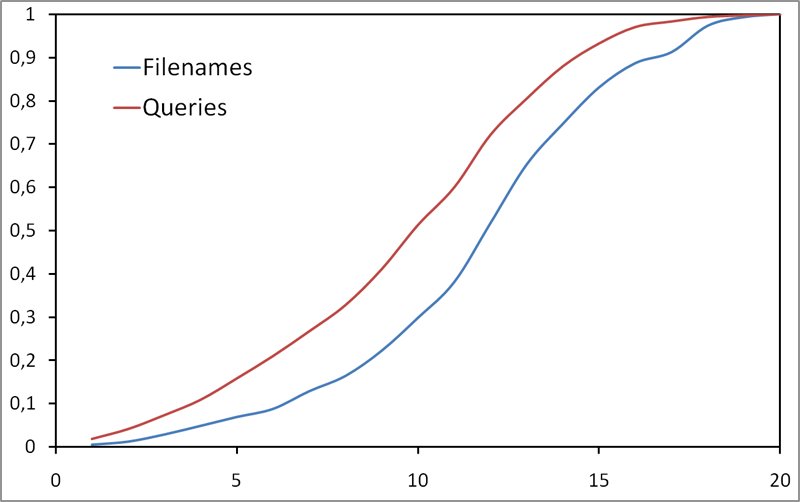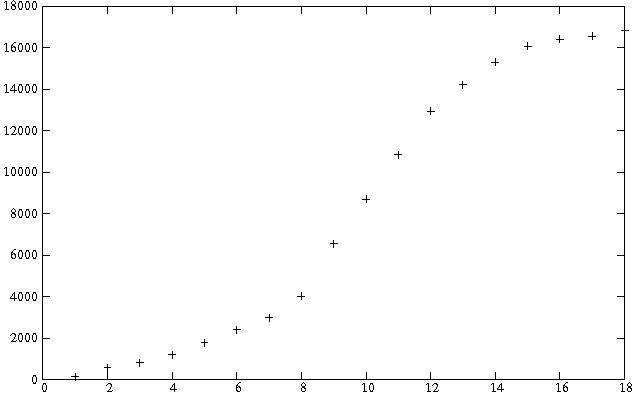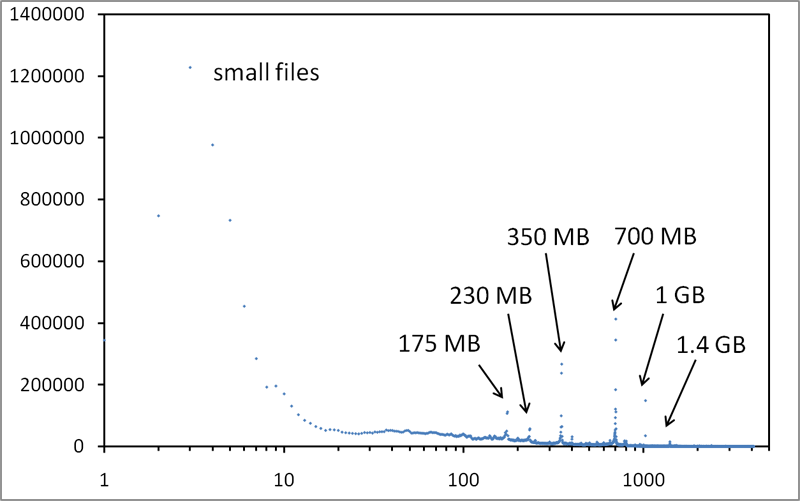Ages in queries and filenames
P2P clients contacting a honeypot
Complex Network Measurements: Estimating the Relevance of Observed Properties
Matthieu Latapy and Clémence Magnien
Infocom’08 Proceedings, Phoenix, USA
Complex networks, modeled as large graphs, received much attention during these last years. However, data on such networks is only available through intricate measurement procedures. Until recently, most studies assumed that these procedures eventually lead to samples large enough to be representative of the whole, at least concerning some key properties. This has crucial impact on network modeling and simulation, which rely on these properties. Recent contributions proved that this approach may be misleading, but no solution has been proposed. We provide here the first practical way to distinguish between cases where it is indeed misleading, and cases where the observed properties may be trusted. It consists in studying how the properties of interest evolve when the sample grows, and in particular whether they reach a steady state or not. In order to illustrate this method and to demonstrate its relevance, we apply it to data-sets on complex network measurements that are representative of the ones commonly used. The obtained results show that the method fulfills its goals very well. We moreover identify some properties which seem easier to evaluate in practice, thus opening interesting perspectives.
Paedophile content in Peer-to-Peer exchanges
P2P file size distribution
Clustering in P2P exchanges and consequences on performances
Stevens Le Blond, Jean-Loup Guillaume and Matthieu Latapy
LNCS, proceedings of the 4-th International workshop on Peer-to-Peer Systems IPTPS’05, 2005, Ithaka, New York, USA
We propose here an analysis of a rich dataset which gives an exhaustive and dynamic view of the exchanges processed in a running eDonkey system. We focus on correlation in term of data exchanged by peers having provided or queried at least one data in common. We introduce a method to capture these correlations (namely the data clustering), and study it in detail. We then use it to propose a very simple and efficient way to group data into clusters and show the impact of this underlying structure on search in typical P2P systems. Finally, we use these results to evaluate the relevance and limitations of a model proposed in a previous publication. We indicate some realistic values for the parameters of this model, and discuss some possible improvements.
Combining the use of clustering and scale-free nature of user exchanges into a simple and efficient P2P system
Pierre Fraigniaud, Philippe Gauron and Matthieu Latapy
LNCS, proceedings of the 11-th international conference Euro-Par, 2005, Lisbonne, Portugal
It appeared recently that user interests in a P2P system possess clustering properties that may be used to reduce significantly the amount of traffic of flooding-based search strategies. It was also observed that they possess scale-free properties that may be used for the design of efficient routing-based search strategies. In this paper, we show that the combination of these two properties make it possible to design an efficient and simple fully decentralized search strategy. Further, simulations processed on real-world traces show that other unidentified properties hidden in actual queries make our protocol even more efficient, performing searches in logarithmic expected number of steps.
Statistical analysis of a P2P query graph based on degrees and their time-evolution
Jean-Loup Guillaume, Matthieu Latapy and Stevens Le-Blond
LNCS, proceedings of the 6-th International Workshop on Distributed Computing IWDC’04, 2004, Kolkata, India
Despite their crucial impact on the performances of P2P systems, very few is known on peers behaviors in such networks. We propose here a study of these behaviors in a running environment using a semicentralised P2P system (eDonkey). To achieve this, we use a trace of the queries made to a large server managing up to fifty thousands peers simultaneously, and a few thousands queries per second. We analyse these data using complex network methods, and focus in particular on the degrees, their correlations, and their time-evolution. Results show a large variety of observed phenomena, including the variety of peers behaviors and heterogeneity of data queries, which should be taken into account when designing P2P systems.





